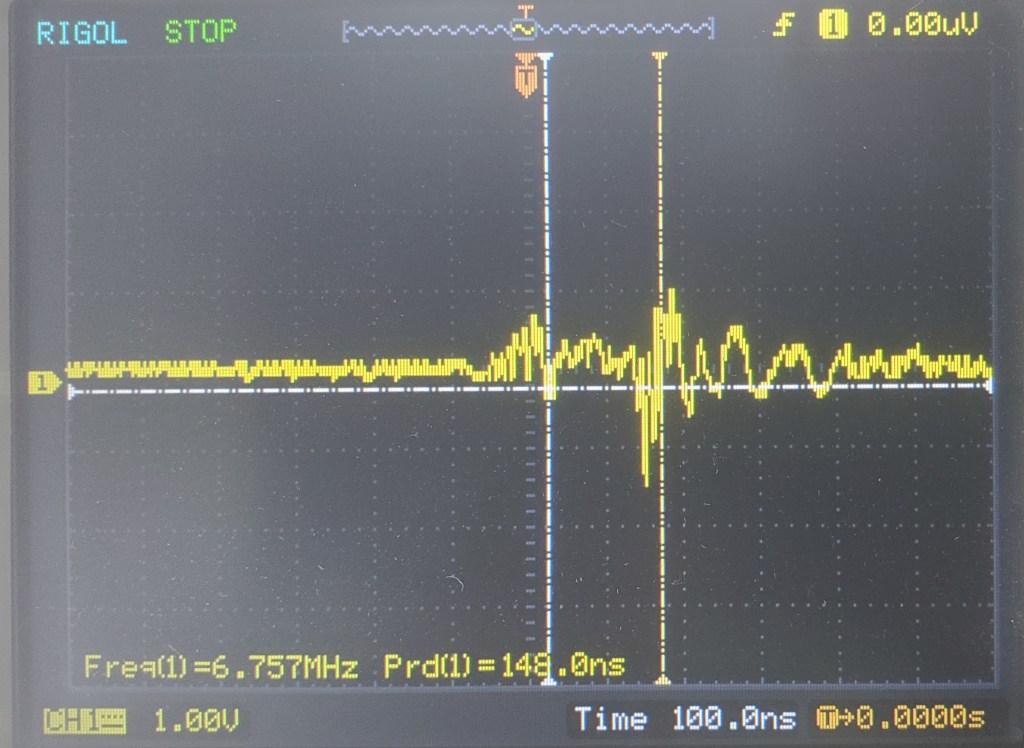Author: Diadon Acs
Conscious Energies Labs 2019 February, 2nd (updated April 4th 2024)
Creative Commons License by Conscious Energies Labs
This document is licensed creative commons and is an open source document for the aims of an abundant power utility to the earth.
Research and Development by www.conscious.energy
dba Conscious Energies llc
Abstract:
To induce a plasma in a hydrogen dense medium for the purpose of converting hydrogen into amplified electromagnetic radiation. Direct Current Electrical discharges in an aqueous ion rich solution produce cavitation bubbles and hydrogen excitation across a catalytic substrate. It is hypothesized that these cavitating bubbles have enough pressure and heat to overcome the coulomb barrier of atomic nuclei on their collapse. It could be possible to transition electrical energy into thermal energy via Electrolytic Magnetohydrodynamic Plasma Discharges in a Helmholtz resonator. Where the incorporation of magnetohydrodynamics and bubble cavitation dynamics can help create harmonic plasmas for the generation of either nuclear fusion energy, or a cyclical chemical process energy that efficiently converts hydrogen into electron emissions (γ).
Experimental Premise
The experiment is to test the concept of breeding D2 (Deuterium) species from H2O (~1 atom of deuterium per 6400 atoms of regular hydrogen) Using magnetohydrodynamic turbulent flows to increase the probability of D2 in a cavitating reaction site. (Point Charge/Discharge Bubble Cavitation)
An excited state of hydrogen (Plasma) has been observed in the boundary layers of crystalline structures (i.e. metallic lattices) to produce breakdown voltage of the aqueous medium. Rather than external confinement via strong electrostatic or magnetic fields, it should be plausible to interact with the coulomb barrier of hydrogen using magnetohydrodynamic resonant oscillations “Harmonic Frequencies” of an apparatus’s resonant chamber, with the use of a crystalline structures boundary layer. The effects of harmonic and/or an-harmonic (turbulent or laminar flow) modes can be applied for best use practices.
(electro-nuclear collapse, Rydberg matter, itonic charge clustering, exotic vacuum objects, Schwinger Limit, super dense hydrogen (dark hydrogen), harmonic/an-harmonic electro-neutrino imbalance, Born-Oppenheimer approximation, and other undefined energy states should be considered as theoretical framework)
The use of cavitating bubbles via electrical discharges in a resonant cavity generates acoustic cavitation of hydrogen gas, which can potentially generate thermal energy of up to 20,000+ degrees K
Experimental Verification
The use of cavitating bubbles via electrical discharges in a resonant cavity can generate acoustic cavitation of hydrogen gas, which has cascading potential to generate thermal energy of up to 20,000+ degrees K
University Of Illinois At Urbana-Champaign. (2005, March 9).
On the bubble walls and subsequent collapse, a measurement of pressures of 8 GPa has been measured E.A. Brujan, T. Ikeda, Y. Matsumoto,
On the pressure of cavitation bubbles, Experimental Thermal and Fluid Science, Volume 32, Issue 5, 2008, Pages 1188-1191, ISSN 0894-1777.
In theory more D2 species should be concentrated (bred) through electrolysis. The plasma reactions should become stronger as the reactor breeds a highly charged form of hydrogen as the oxygen is vented off into the surrounding atmosphere. Does the hydrogen energy exceeds the standard electromagnetic energy in an enthalpic balance.
This includes the well-known isotopes of hydrogen:
- The three most stable isotopes of hydrogen: protium (A = 1), deuterium (A = 2), and tritium (A = 3).
- Protium, the most common isotope of hydrogen, consists of one proton and one electron. …
- A deuterium atom contains one proton, one neutron, and one electron.
- A tritium atom containing one proton and 2 neutrons which has a half life of 12.3 years
https://en.wikipedia.org/wiki/Isotopes_of_hydrogen
As well as supposed and predicted self organizing forms of hydrogen with respective phase transitions.
Phases of Hydrogen
- Gaseous hydrogen.
- Liquid hydrogen.
- Slush hydrogen.
- Solid hydrogen.
- Metallic hydrogen.
https://en.wikipedia.org/wiki/Hydrogen
New phase of liquid water and plasma conduction
The electrical power consumption would hypothetically go down as a plasma forms and the reactor core would become more conductive. This also coincides with a recently confirmed phenomenon found in between 40-60c and plasma conductivity.
An observational confirmation in nature might be found in galactic structures like filaments and the purposed black holes of a negatively charged condensed matter. These theoretically being electrically charged condensed hydrogen plasma fields of varying orders of magnitude.
The Experimental materials:
-Equipment, Materials, and Regime
-Distillers kit and borosilicate glassware with the ability to loop the water phases. Water > Steam > Water

Calibration of first Experiment using standard Joule Heating in Electrolytic Cell.
Needs to be re-ran with New Mass Flow Setup.
-Quartz Tube

-99.9% Pure 26AWG Nickel Wire

-Potassium Hydroxide (KOH)
-Distilled Water or DI Water (Deionized Water)
Given:
– Mass of KOH = 17g
– Molar mass of KOH = 56.11 g/mol
– Volume of solution = 1000 mL = 1 L
Substituting the values:
The molarity of a solution where 17g of KOH is dissolved in 1000 mL of H2O is approximately 0.303 M. The calculation is presented as follows:

-Nanoparticulate Graphite Using a the method of electrochemical separation of graphene sheets. Source: https://doi.org/10.1016/j.cocis.2015.10.007
-Variable DC Power Supply of 0-600 VDC (“Variac” Variable Transformer) to isolation step up transformer. Max power supply is 2kVA facilitated by the variable transformer and fuse.

-Rectified and passed through a smoothing capacitor bank.
DAQ (Data Acquisition) and Sensors ( EMI Shielding is needed)
Raspberry Pi v3 Arduino Mega
PT100 RTD with a Max31865 Module (Cannot read Temperature In near proximity of the reaction site)

Mass Flow Calorimeter Inner Box

Vevor DZ3000LS-QX Industrial Chiller Heat Exchanger/Chiller


Thermistors (DS18B20) x 4 (Shielding on sensor was originally used to isolate Electromagnetic Radiations Interference. This did not prevent the sensors from being bombarded by this radiation.)

Piezoelectric Transducer (A transducer was placed on the bottom of Borosilicate Beaker produced minor reading on Oscilloscope. There was difficulty in isolating signal to noise to deduce an accurate Frequency measurement for Plasma oscillations.)
Fair Power Monitoring IC Module PZEM-022 (Switched to Current Clamp and Direct Power Measurement with Emon Pi Open Software)

GQ Nuclear Radiation Detector (GMC-300E Plus) No Higher Levels of Radiation Detected

GQ GMC EMF-390 (Data Pending)

Rigol DS1052E Digital Oscilloscope

DIY Light Spectrum Analyzer by Theremino
12mm Lead shielded CMOS Sensor (No High energy Particles Detected)
Acer Aspire 5 Laptop Computer
Method of operation
Electrolytic Chemistry
In this case, KOH (Potassium Hydroxide) on one nickel wire -Cathode and a Platinum +Anode. The purpose of the wires is to eliminate contaminants in the reactor, as well as reduce the possibility of galvanic exchange between dissimilar metals. (Update: +Anode disassociated Nickel into solution.
Great care is taken in cleanliness of the reaction components for post experiment analysis.
17g of KOH is dissolved into 1L (1000mL) of Distilled H2O. ~1.8g of Nanoparticle Graphite suspension in Distilled H2O is injected into the -Electrode Quartz Tube using a pipette.

Electrode Placement and Reactor Design

- 26 AWG Pure Nickel Wire Negative Cathode
- Platinum Positive Cathode
- Quartz Tubes
- Reaction Site
- PTFE Diaphragm
- Ceramic Magnet

Electrode positioning is important for magnetohydrodynamic motion and resonant modes of cavitation. A thermoacoustic effect should also be present on the Quartz tube form the surface plasma of the -Cathode Nickel Wire. A static Magnetic field, in this case North facing up, is placed on the bottom of the -cathode tube to stimulate magnetohydrodynamic flow. A diaphragm made of PTFE High Temperature plumbers tape is placed on the top of the tube to concentrate Hydrogen Gas and Nanoparticulate Graphite (Carbon) on the surface tension of the solution, where the plasma is most active from boundary layer effects on the crystalline nickel lattice. The PTFE also tape also acts to induce thermoacoustic oscillations and pressures in equilibrium.
It is important to keep the oxygen redox reaction on the + anode separate from the – cathode hydrogen formation. This ensures hydrogen purity in the system as the oxygen is vented off safely.
The power is set to 60VDC on the power supply.
When the reactor temperature reaches 40C, slowly turn the voltage up until a plasma is established. This article will be updated to reflect progress and add more citation. It is a living Open Source Science Paper until all empirical evidence can be collected on the viability of Hydrogen Fusion by means of Electrolytic Magnetohydrodynamic Plasma in a Resonant Cavity.
When properly tuned and given time to reach a critical temperature of >=47c and a Voltage of ~369VDC rapid temperature rise and Electromagnetic Radiation is observed. No Alpha/Beta/Gamma Radiation was detected and general power input was recorded.


More data needs to be collected and calibration for the mass flow calorimeter is under way. There seems to be a +/-10% Margin of error on the current flow meter I am testing. A more expensive ultrasonic or electromagnetic flow meter may be necessary. This is an open source active experimenting log for others to follow along and later replicate or iterate on the process. Being able to fuse hydrogen into heavier isotopes effectively can give the human species the opportunity to advance, but only if done in an open and transparent manner. The reason patents and proprietary ownership of this technology is in the public domain is due to the Hypothesis of the Energy Freedom Paradox (Work in Progress).
Last Updated 11-5-2022 To be continued…
References:
Schwinger Effect / Schwinger Effect
Steps to the Discovery of Electro-Nuclear Collapse: Collected Papers (1989-1999)
Electro-chemical Separation of Graphite Sheets
If you would like to support our project, please consider donating here
Bitcoin Address: bc1q67s5778nvqmcuy6rhpn3h6t85rcp2gn78qlmeu

Please feel free to contact us at support@conscious.energy for any questions or inquiries.
Thank you for your interest in Conscious Energy